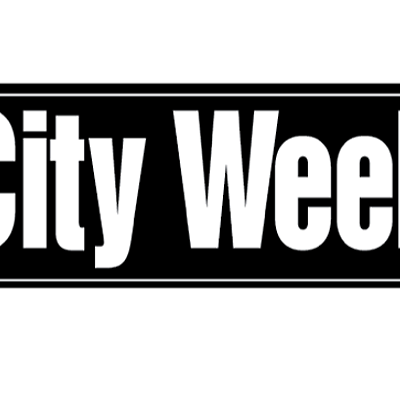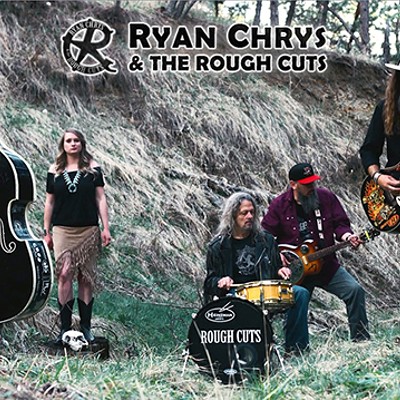This was the second time in recent months the local media have attempted to make a meal out of scraps from Hollywood's table, as late last year they granted unprecedented inches and screen time to William Shatner's visit to the region, bestowing on the good captain and his small production, Groom Lake, a gravity that most would think undeserved. While the Tucson Film Office attempts to bring film production dollars back to the region--a task that is more difficult now than ever before--the media with their ebullience seem star-struck and provincial, an image that belies Tucson's status as an almost-major footnote in the history of the motion picture industry.
That being said, it is hard to blame the media for such zealousness, as Arizona in general and Tucson in particular have always had a contradictory, if not ironic, relationship with the movie industry.
With the sun incessantly shining and the scenery transformed with every step-up in elevation, Arizona--especially Southern Arizona--is an ideal place to make movies, especially Westerns. But the Western as a genre, like gangster pictures and sci-fi films, has had a cyclical popularity and an extremely uneven career. Most of the films produced here since the turn of the century have, of course, been Westerns, most of them not very good. And it is the not-very-good Western movie, the 20th-century equivalent to the myth-making dime novel, that has perpetuated the well-worn oversimplifications about the so-called Wild West that are still, despite decades of popular and scholarly historical revision, burned in the national imagination.
That those well-worn platitudes still comprise the bulk of Arizona's identity to the rest of the nation is mostly Arizona's--and Tucson's--own fault, and not just because many of the Westploitation films that perpetuated the myths were filmed here. Arizona, some would argue, has resisted rising culturally above its national image as a kind of Western legend theme state, perhaps because it's so damn easy not to.
Ironically, it may have been the myth of what the West was supposed to be that kept Arizona from becoming the western seat of the film industry instead of just a poor relation, if one is to take for truth a story often related, with minor variations, in most histories about the western march of the movie business. It is an apocryphal-sounding story about fate's privilege, a story that Bob Shelton, former owner of Old Tucson Studios--and the undisputed patriarch of Tucson's modern film industry--often opens with.
In 1914 the legendary producer Adolph Zuker sent Cecil B. DeMille and Samuel Goldwyn to Flagstaff. Zuker had the year before bought the rights to The Squawman, a Broadway play with a typical Western theme. DeMille and Goldwyn, looking for alkaline flats and purple sage, stepped off the train into snow, finding themselves surrounded not by mesas and cacti but by white-capped mountains and near-alpine vistas. "I thought Arizona was a desert," one might have said to the other.
If they had traveled a day or so downstate to Tucson--then the principal urban area in the young state--they would have found exactly what they were looking for, and the climate and the variation might have persuaded them to set up shop, or so the speculation goes.
But they didn't go south and they didn't stay in Flagstaff; instead, they headed further west and stopped when they ran out of land. They rented a barn and made the first full-length Western. Thus Hollywood was born and Arizona passed over as a candidate for the western seat of a fledgling industry that would irrevocably transform the world.
That's not to say that the movie industry didn't come to Southern Arizona; it did, and to a certain extent it still does. There were a few films produced here in the early days, and a few studios set up offices, including those of the Al Jennings Production Company, which had an office here in 1918. Jennings was a former outlaw whose ambition was to release the Western bandit from the romantic sentimentality that dominated much of the media coverage of that famous, and to a large extent made-up, Western lifestyle.
Such exceptions aside, however, after Hollywood was established not much happened here until Columbia Pictures came in 1939 and built Old Tucson, a purported replica of Tucson circa 1860. Columbia came to film an outdoor epic aptly titled Arizona, starring William Holden and Jean Arthur. Other productions trickled in, bringing with them a host of myth-making stars to a region that was already falling back on hackneyed stories of cowboys and Indians, outlaws and gunfighters, saloon girls and freedom, in its search for a national identity. For a while Old Tucson fell into disrepair and near obscurity; then, in 1959, Shelton bought the land and put some money into the moldering complex. He opened for business in 1960.
In Shelton Tucson found its most active impresario.
Shelton is credited today by many in the industry for single-handedly making Tucson, for a time, a major film location. When Tucson's film industry was at its peak, between the 1960s and the early 1990s, the community was doing $20-25 million in film business per year, according to Shelton.
"It grew very substantially to the point where, at the peak of our prosperity, we could field three full film crews out of Tucson, and that was attractive to the industry," Shelton said.
"There was a time when I had John Wayne, Clint Eastwood, Lee Marvin and Burt Lancaster all working on films at Old Tucson at the same time."
Dubbed the "Hollywood of the Desert," Tucson at its peak was third only to Hollywood and New York in film production. Though not much of what was made here will be remembered, most of it forgettable Westerns, TV episodes and commercials, there were some good movies made in Tucson during the heyday, including Hombre, Duel in the Sun, El Dorado, Gunfight at the O.K. Corral, McClintock, The Outlaw Josey Wales, Oklahoma, Rio Bravo and The Three Amigos.
Shelton sold out eventually, and in 1995 the studio that for 60 years had "played a prominent role in shaping the world's perception of the old west" (as Old Tucson's Web site brags) burned down. The fire took with it irreplaceable props and costumes and the last hopes of a local subculture created when the work was plentiful--a group of men and women who relied on Tucson's movie industry for work.
But the business had really been dying before the fire. A phenomenon known as "runaway production" had started to take a toll. The film production money had started flowing north, to Canada. Canada had already created the production service tax credit, a stroke of genius that offered foreign film and television production companies tax breaks on production labor expenses. The PSTC, coupled with further tax incentives offered in individual Canadian provinces, created a production-crew employment boom, and left a lot of film industry workers in California--not to mention workers in smaller, ancillary markets like Tucson--out of work.
Though the Tucson Film Office has been working hard to overcome runaway production, it may be a hopeless cause. A recent Director's Guild of America study reported that in 1998 alone, the nationwide economic impact of runaway production had reached $10.3 billion, a five-fold increase since 1990.
With no studio, no sound stages, no government incentives, and a dwindling, disheartened crew base, it is hard to imagine how sunshine and scenery alone will bring the productions back to Tucson.
"Up until the fire this community maintained a level of film production higher than most places," Shelton said. "But when they rebuilt (Old Tucson) they didn't rebuild the qualities and the things in the town that the film companies came here to film. They have made it pretty clear that their interest is primarily in tourism."
And it is a kind of tourism--like most of Southern Arizona's tourism--that exploits and perpetuates the banalities of the worst Western movies.
Considering that anyone attempting to either create or talk about culture in Arizona must first and always fight past the simplified or downright false impressions most of the outside world harbors about the region, the fact that Old Tucson and the movies made there "played a prominent role in shaping the world's perception of the old west" may not be quite the accomplishment its Web site makes it out to be.










